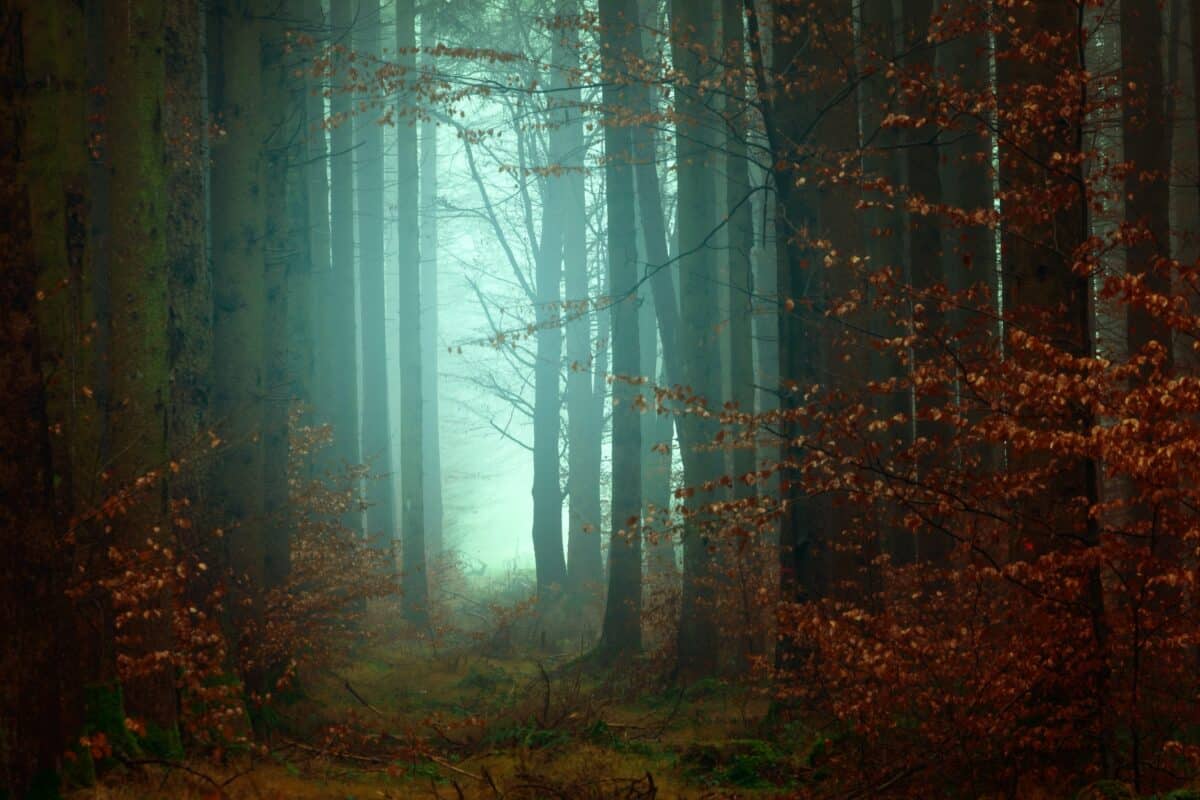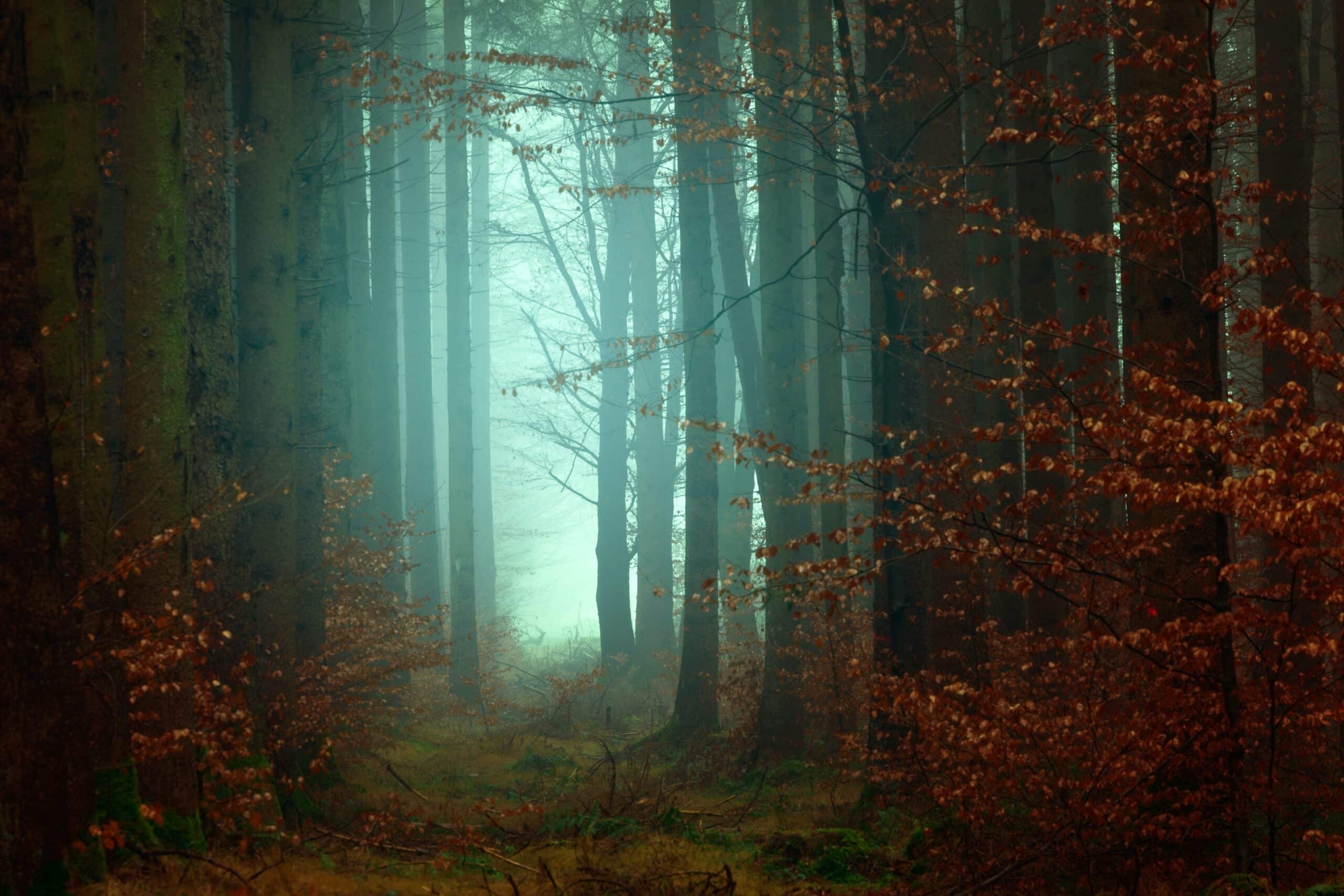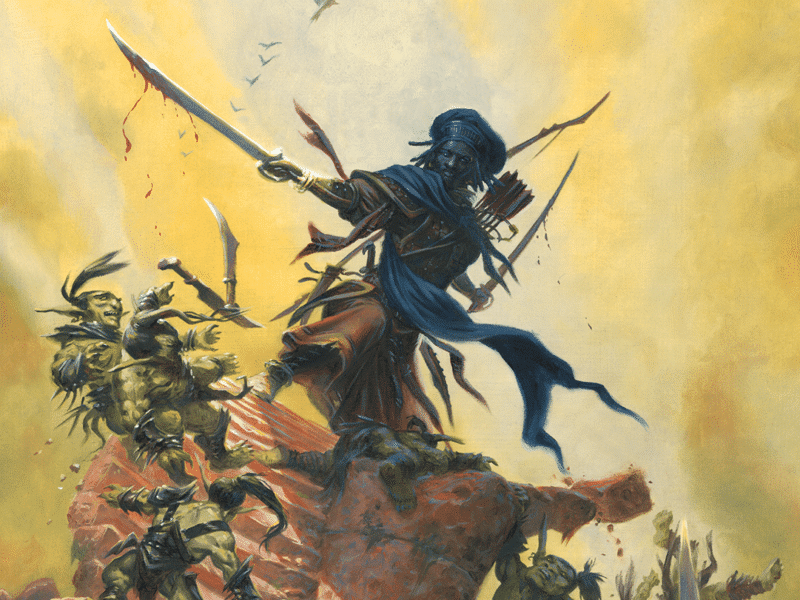This article takes a look at what might be the most traditional of roleplaying game settings – the wilderness – and how you can use this environment to its full effect.

We’ll kick off with a simple tip that is likely to add a ton of immersion and atmosphere, and it’ll take only a minute – or less. The tip is to add a bit of narration! It’s true that long descriptions aren’t every DM or player’s cup of tea, and that some prefer to sprinkle in a few details and let the players’ imagination do the rest. And that’s totally fine – in fact, it’s a great way to keep the pace brisk and prevent lulls. However, I’d suggest that you consider spending just a brief moment – 30 seconds or less – describing key locations or surroundings. And by key, I mean those that are going to be the stage for most of the events in the adventure, if there are such places. I would also suggest that you do so only once, as early as possible, especially if the characters are travelling.
For example, let’s say the characters are trekking through a forest while searching for an old elven tower that’s supposed to have been overrun by orcs. The trip will take three days and there won’t be any encounters (because there’ll be plenty of those in the tower). This could be summed up by the DM in the following way: “You travel through the woods for three days without problems and arrive at the tower on the evening of day three”. Nothing wrong with that, and it’s certainly a way to get them there quickly. However, compare that with the following:
That morning, you leave the inn beside the winding road and head straight into the woods, following the instructions that you received from the wizened bard by the hearth.
At first, the woodlands are easy to travel, and you walk past tall trees while the wind rustles in canopies high above. Soon, however, the forest thickens, and you start to feel as if you are in a persistent gloom. The ground is covered with damp fern, while majestic spruces block out most of the daylight as well as your line of sight. There are few sounds except for the occasional caw – crows, you reckon, hidden in the murkiness.
On your second day, the woods grow ever denser, and you begin to feel as if someone is watching you. The air is filled with the scents of wet dirt and fresh rain. After a while, the ground becomes harder to traverse as its riddled with moss-covered boulders and the trunks of colossal fallen trees. The crows seem to follow you, their occasional caws echoing in the distance.
And so on! The above takes only a few seconds to read out loud, but that’s all it takes to immerse the group in what it really feels like to wander into the ancient woods, and they’ll have this impression at the back of their minds throughout the rest of the adventure. Consider it a cut scene from a video game – that’s the kind of feeling you’re going for. Unless you’re comfortable with coming up with narration on the spot, you’ll probably want to spend a few minutes writing down the snippet, but it’ll probably take less time than you might think. And you might find that it’s fun, too!
On to the forest and what it contains! In short, I’d recommend that if your adventure is themed around a specific environment – and I often find that this is useful for promoting engagement and for avoiding the sense of that everything is a bit random and disconnected – then consider giving the players exactly two things: what they expect, with some added flair, and what they really don’t expect. In other words, establish the theme with a few anticipated but embellished features, and throw in a surprise or a twist.
The scenery
First up are the basic aspects of the environment – what the adventurers see, hear, and smell. Most people have been in a forest at least once, and they’re naturally evocative places, so merely saying “you’re in the woods” will fire up your players’ imagination. But you want to take things a little bit further than that!
Start with the trees and describe what they’re like – short or tall, willowy or massive, leavy or barren, grey and streaked with pale green moss or deep brown with coarse bark. What are the leaves like? Are they the size of dinner plates and bright red, or long and slim with jagged edges? Do the trees stand close to one another or are there many yards between them? How do they affect the lighting?
And what’s there besides the trees? Are there big rocks and gnarled logs? Lots of flowers or bushes? Vines and shrubs? Is the ground level and grassy, or uneven with lots of shallow depressions?
Move on to the wildlife (at least that which the characters can perceive – predators and shy beasts won’t reveal themselves so easily). Is the forest full of sounds of animals or strangely hushed? Are there traces of creatures visible on the ground? And, of course, are there any paths – and if yes, are they well-travelled or overgrown?
Throw in a few standout features, such as large ponds or even lakes, especially big trees, curious rock formations, rare plants, and – if appropriate for your campaign – ruins. Few things are so atmospheric as old crumbling buildings and decorations. They instantly add depth and texture to any adventure, and if they’re situated in a forest, it just shows that lots of time has passed.
Dangers
It’s easy to think that the primary natural danger in a forest is the threat of feral beasts that look to turn unwary characters into dinner. That might be true – but beasts that reside in a forest can be far more interesting than the occasional raging boar or hungry bear. Let’s begin with taking a look at one of the most common creatures that often are dropped into adventures to offer a light but palpable threat: the wolf.
Rich in history, threatening by default and familiar to most people (from fiction if not real-life encounters), the wolf is pretty much a staple foe in D&D. Of course, if you’re playing Curse of Strahd, there are wolves everywhere, but that’s a different thing! And wolves are indeed cool: fanged, clever, and howling – what’s not to like? But I’d argue that wolves are much more than just that. For a start, they hunt in packs, as described in their statistics. That doesn’t only mean that there’s a bunch of them running around at any given time, but that they hunt cleverly. One might reveal itself just to draw careless adventure out of cover so that the rest of the pack can dash in from another direction. They might flank the adventurers, or divide the pack in two and take turns to attack, or make ambushes at a location that is to their advantage.
Wolves are also social creatures that have strong links to myths and fairytales. For this reason, they can be more than just a threat. Perhaps one approaches the member of the adventure party who is the closest to nature (typically the ranger or the druid), and successfully communicates (through body language) that its pack seeks help in the fight against a really lethal opponent – maybe a green dragon that’s slain several wolves and wants to claim their territory?
Many other beasts can be used in non-standard ways too. If the characters are being attacked by a brown bear, consider why the bear is attacking. Is it defending its cubs, or is it enraged because it’s raided a beehive and has suffered lots of stings? Or maybe it’s furious because it’s been wounded by goblins and has arrows sticking out of its fur – something a keen-eyed adventurer might notice – and it’s a matter of time before said goblins join the fight?
Likewise, you can introduce a startling monster that’s seeming totally out of place – until the characters learn more (and it’s critical that they do learn more, so make sure at least one of them will understand the reason for the monster’s presence). For example, if the players are travelling through a tranquil, pristine and leafy forest peppered with sunlit glades and delighting birdsong, they won’t expect to meet a black pudding, a black dragon, or a drow. But what if they do – and you, as the DM, have a very good reason to drop that particular monster into the adventure? Maybe the monster in question lots its way underground after an encounter with an even more dangerous opponent and has fled to the surface? Maybe it is looking for allies? Or maybe it’s merely pretending to be disoriented in order to lure the adventurers closer?
Natural Hazards
There are also many natural dangers in an unkempt forest, such as deep pits where the ground has given way for some reason (perhaps a big tree fell over and left a gaping hole behind), frothing rivers that can swipe away a create in the blink of an eye, old trees that are waiting to fall down at the slightest disturbance, or thorny bushes that are poisonous and might entangle creatures. And that’s just the start!
Critically, to make any of these types of threats engaging and contribute to the atmosphere of the surroundings, turn them into a real encounter rather than just a dice check. One way to do this is to stick a character (or all of them) into trouble, let the problem escalate, and add a ticking clock. Maybe the adventurers are strolling through the woods when one of them suddenly gets stuck in a patch of barbed plants. At the same time, a swarm of hornets zoom in because the character has upset their nest. And that’s not all! The characters’ movement also disturbs a huge dead tree that’s been leaning against another tree, and the tree begins to fall towards the stuck character who has only three rounds to escape. In a flash, the peaceful walk has turned into utter pandemonium, and the forest will no longer feel like just another group of trees but a place where the unexpected might happen at any time.
The totally unexpected
What then of things adventurers might encounter in a forest that are wholly unanticipated (unless signposted earlier on in the adventure by the Dungeon Master)? The short answer is “anything that doesn’t belong in the woods. And since this is Dungeons & Dragons, a roleplaying system that’s legendary for being a hotpot of monsters from all corners of the world and every era in existence, the DM has a lot to choose from! But again, the key is to pick surprises that somehow fit the general theme, and which have a reason for being in a forest in the first place – and then make them interesting.
For example, let’s say that the adventurers have been tasked with travelling to a haunted building deep in an ancient woodland where the oaks grow huge and the ground is filled with flowers. This makes for a great contrast, but it’s one that easily can slide into a crash instead. If the heroes have been journeying for days through a wondrous and pleasant environment, it’d be jarring for them to suddenly find a creepy Dracula-esque castle. That kind of bluntness it’s what we want to steer away from, and it can be done with two easy tricks.
One is to use slow transitions, and let the environment change gradually. In the above case, we’re not looking for a jump scare but a growing sense of unease. So the closer to the house that the characters get, the woods might first become hushed, then silent. Flowers might become first fewer and then non-existent, or they can start to show signs of corruption. The air might slowly turn colder, and there might be a gently increasing gloom.
For the house itself, maybe it’s not a towering castle but an old, sprawling elven fortification that’s constructed from wood and vines, which once has been beautiful but now is rotting and decaying – a far more likely find in a lush forest. And maybe the frights that haunt the place aren’t just regular nondescript ghosts or shadows, but various undead spirits of elves who can’t find peace after death because they were betrayed. This way, you’ll have an unexpected discovery that still fits right into the theme of a particular environment.
In a similar fashion, you can drop the characters into an altogether different fantasy environment by applying a plausible transition from one to the other. Let’s say the adventurers are examining the aforementioned haunted former elven abode when one of the falls through a hole in the ground and into what looks very much like a tomb, with several doors leading from it to underground tunnels. Because what no one knew is that underneath the elves’ residence are large ancient catacombs, richly decorated with elven motifs and sculptures. In other words, a bona fide dungeon – but one that fits the setting!
Alternatively, a forest can be a kind of dungeon too. Perhaps the adventurers can’t leave the path because the woods grow too dense, and find that they are effectively trapped inside a labyrinth? Or maybe the paths are magic and change unpredictably – and the adventurers need to figure out which is the right one?
These are some examples of how to play around with the environments in D&D adventures to heighten its atmosphere and make the characters’ surroundings feel more tangible and real. In this article, we’ve covered the most basic of roleplaying game settings – the forest – but there’s more to come, so stay tuned for upcoming articles on different environments!







